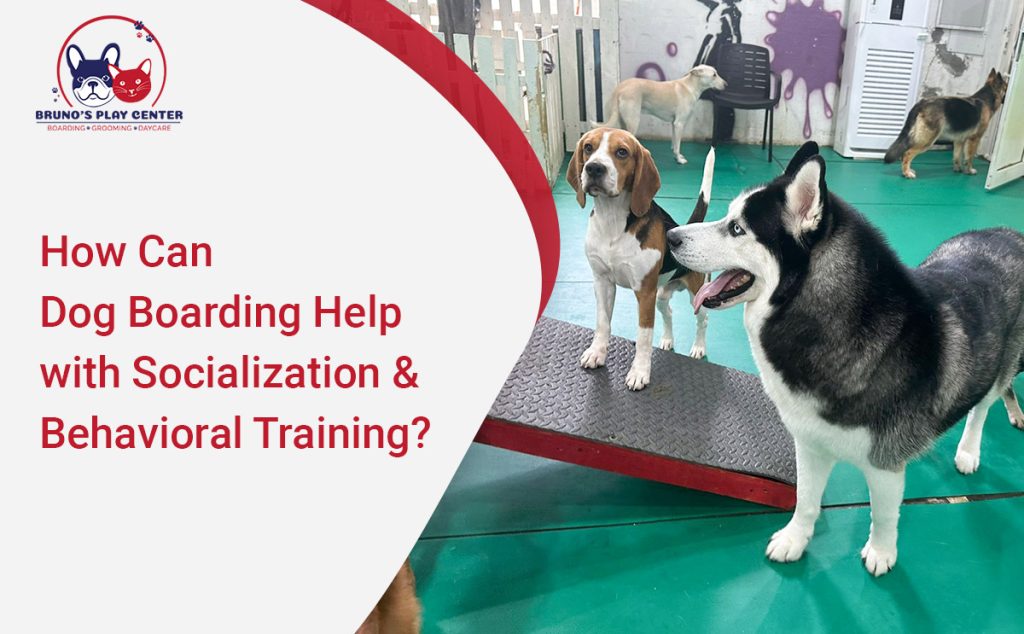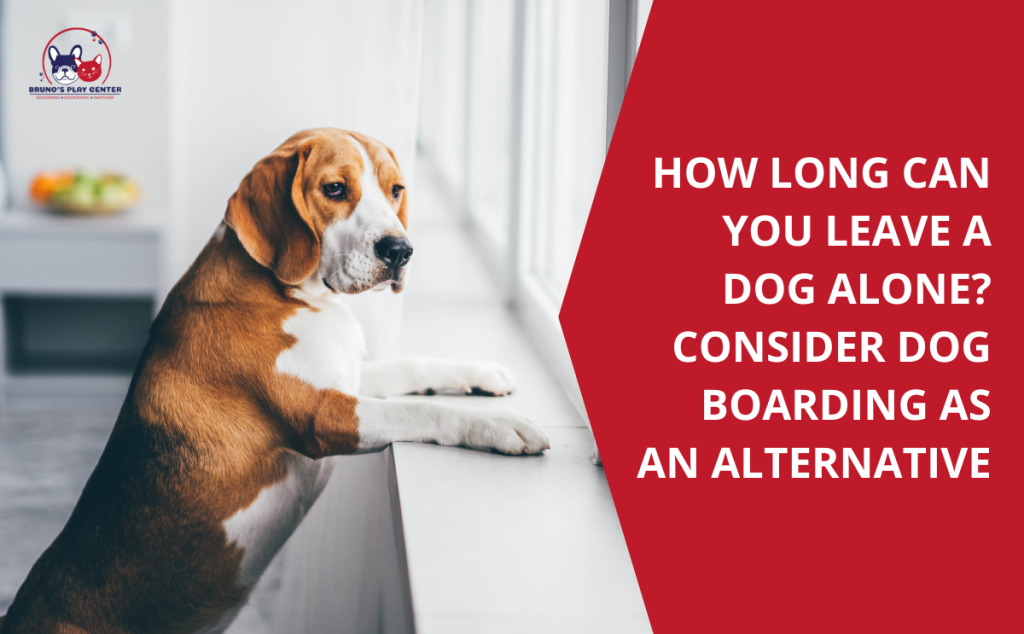Let’s be honest -leaving your dog behind while you travel is never easy. But if your furry friend has a history of snapping, lunging, or acting out in unfamiliar situations, the idea of boarding can feel downright nerve-wracking.
It may be due to signs of fear around strangers, or they’re a little too conscious when another animal gets too close. In such cases, many pet parents are left wondering if safe boarding is even possible for their dog’s unique temperament.
This is a question that thousands of owners grapple with every year, especially during holidays or unexpected emergencies. And it’s a fair concern—after all, you’re not just looking for a place to “keep the dog.” You’re searching for a secure environment that understands behavior challenges and offers care beyond the basics.
In this blog, we’ll break down what causes aggression among dogs, the risks and realities of enrolling them in boarding, how to prepare ahead of time, and what kind of facility can actually meet your dog’s unique needs.
Let’s get into it.
Understanding Dog Aggression: Types and Causes
Aggression in animals is a behavioral response that can stem from various internal and external reasons. Identifying the root cause is essential to determining appropriate care strategies during boarding.
Common types of aggression include:
- Fear-based: A defensive response triggered by perceived threats, especially in unfamiliar environments.
- Territorial: Protective behavior over spaces, food, toys, or people.
- Redirected: Directed toward a person or animal other than the original source of agitation.
- Frustration-related: Often occurs when the dog is restrained or unable to reach a stimulus.
These behaviors can develop due to past trauma, lack of early socialization, medical conditions, or inconsistent training. Researchers have found possible connections between disease, hormones, diet, and adverse aggressive behavior in dogs.
Identifying triggers and behavior patterns helps determine the best course of action when arranging care.
Challenges of Boarding Aggressive Pets
Boarding for aggressive dogs presents both operational and emotional challenges that require thoughtful, specialized solutions.
Below are the key obstacles owners and dog boarding facilities often face.
Safety Risks
Aggressive behavior among dogs increases the risk of injury to staff, other animals, and the dog itself. Facilities must take extra precautions, including isolation protocols and controlled handling procedures.
Limited Facility Options
Many boarding centers resist enrolling animals with aggressive nature due to safety concerns and staffing limitations. This reduces the availability of suitable facilities and often requires more details from the owner.
Specialized Handling Required
As a dog owner, you must keep looking for dog boarding for behavioral training where personnel capable of identifying signs of stress, aggression triggers, and proper handling techniques. Not all staff at general boarding facilities are equipped with this level of expertise.
Elevated Stress and Anxiety
The environment, with unfamiliar people, animals, and routines, can intensify stress in reactive pets. Stress often heightens assertiveness, making behavior more unpredictable.
Need for Isolation
Aggressive animals may need to be kept separate from other boarders. While necessary for safety, extended isolation can affect mental well-being and requires tailored stimulation and interaction strategies.
Higher Boarding Costs
Due to increased handling needs, security requirements, and specialization, the cost of boarding these dogs tends to be higher than average.
How would you deal with such pets where calming their natural instincts is more crucial than ever?

How to Prepare an Aggressive Dog for Boarding?
Effective preparation helps reduce behavioral incidents and increases the likelihood of a successful boarding experience. The following steps can assist in easing the transition for both your pet and the care staff.
Behavioral Training
Owners should work with professional trainers or behaviorists to reduce reactivity. Techniques such as desensitization, counter-conditioning, and structured obedience training help improve responses to triggers.
Socialization Efforts
Gradual exposure to new environments, unfamiliar people, and other animals under controlled circumstances can reduce anxiety in unfamiliar settings and improve adaptability.
Pre-Boarding Visits
Arranging short visits to the facility allows the animal to become familiar with the surroundings. These acclimation sessions help reduce forcefulness during the actual stay.
Provide Detailed Behavior Information
Share details of your dog’s background — any prior incidents, what usually triggers them, how they respond to pressure, and what calms them. Share information about procedures that are soothing to them, signals you have for them, and environment settings that you have found help them feel safe.
Vaccination and Medical Records
All health documentation, including vaccination records, recent medical history, and any ongoing treatment, should be updated and shared with the facility prior to the stay.
Use of Calming Aids
Under veterinary guidance, calming aids such as anxiety wraps, pheromone diffusers, or prescribed medications can be used to reduce stress and prevent the escalation of such assertiveness.
Trial Stay
Before committing to an entire boarding period, a trial stay of one to two days helps evaluate how the animal responds to the facility and enables adjustments to care plans if needed.
Why Choosing the Right Boarding Facility Is Essential?
Not all boarding environments are equipped to handle behavioral challenges, especially when it comes to boarding for aggressive dogs. Selecting the appropriate one ensures better safety, comfort, and emotional stability throughout the staying period.
Staff Trained in Aggressive Behavior
Facilities that accept dogs with behavioral challenges must employ experienced handlers trained in canine behavior management and de-escalation techniques. Their knowledge ensures safer interactions and appropriate care.
Proper Safety and Security Measures
Secure enclosures, double-gated entryways, and separate play or exercise areas help prevent escape attempts or interactions with other animals that might trigger aggressive responses.
Stress Reduction Protocols
To provide a peaceful and secure environment for every pup, the finest facilities implement services that go beyond basic care. Dog Boarding in Dubai equipped to manage aggression, often implements noise control, individual exercise routines, and minimal exposure to stimulating environments to reduce stress levels.
Customized Care Plans
A tailored approach to feeding, medication, exercise, and human interaction ensures that individual behavioral and health needs are met. Customization also contributes to emotional stability during the stay.
Prevention of Behavioral Regression
When care is consistent with the training and structure provided at home, the risk of behavioral regression diminishes. This continuity reinforces learned behaviors and supports progress.
Peace of Mind for the Owner
Selecting a qualified facility provides reassurance that the dog is in safe hands. Regular updates and communication during the boarding period further enhance trust and reduce owner anxiety.
Conclusion
Boarding an aggressive dog is undoubtedly more complex than standard arrangements, but with a well-informed approach, it is entirely manageable. The key lies in understanding behavioral triggers, preparing the animal thoroughly, and selecting a facility equipped to handle specific needs.
When these steps are followed, owners can travel with confidence, knowing their little furry companion is receiving adequate, safe, and attentive care.
The goal is not just temporary care but also the continuation of trust, safety, and well-being in a controlled, supportive environment.
Bruno’s Play Center offers specialized care and trained staff experienced in handling dogs with behavioral challenges, ensuring a secure environment.
Your dog deserves the best—reserve their spot today!




